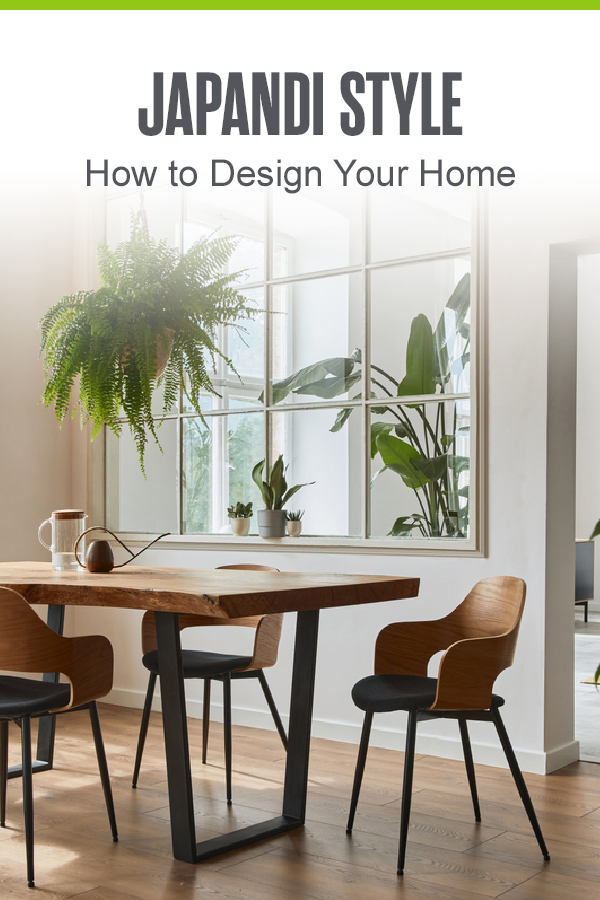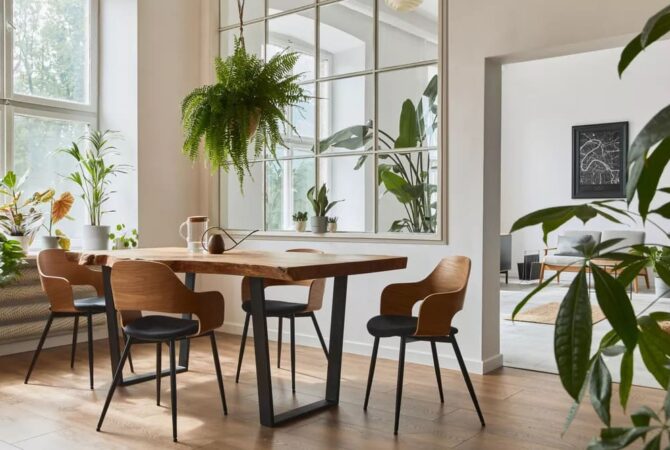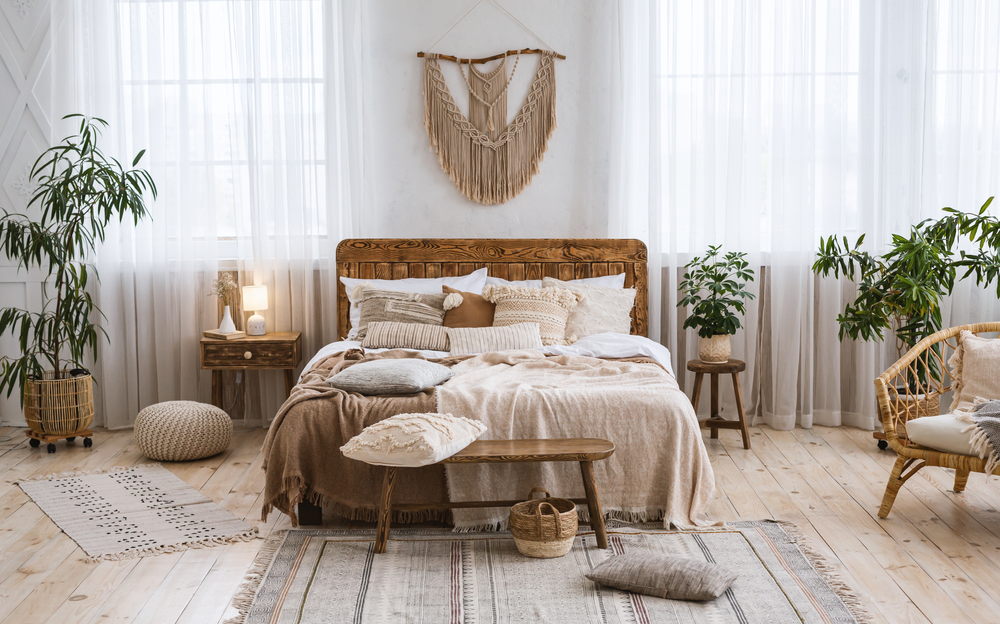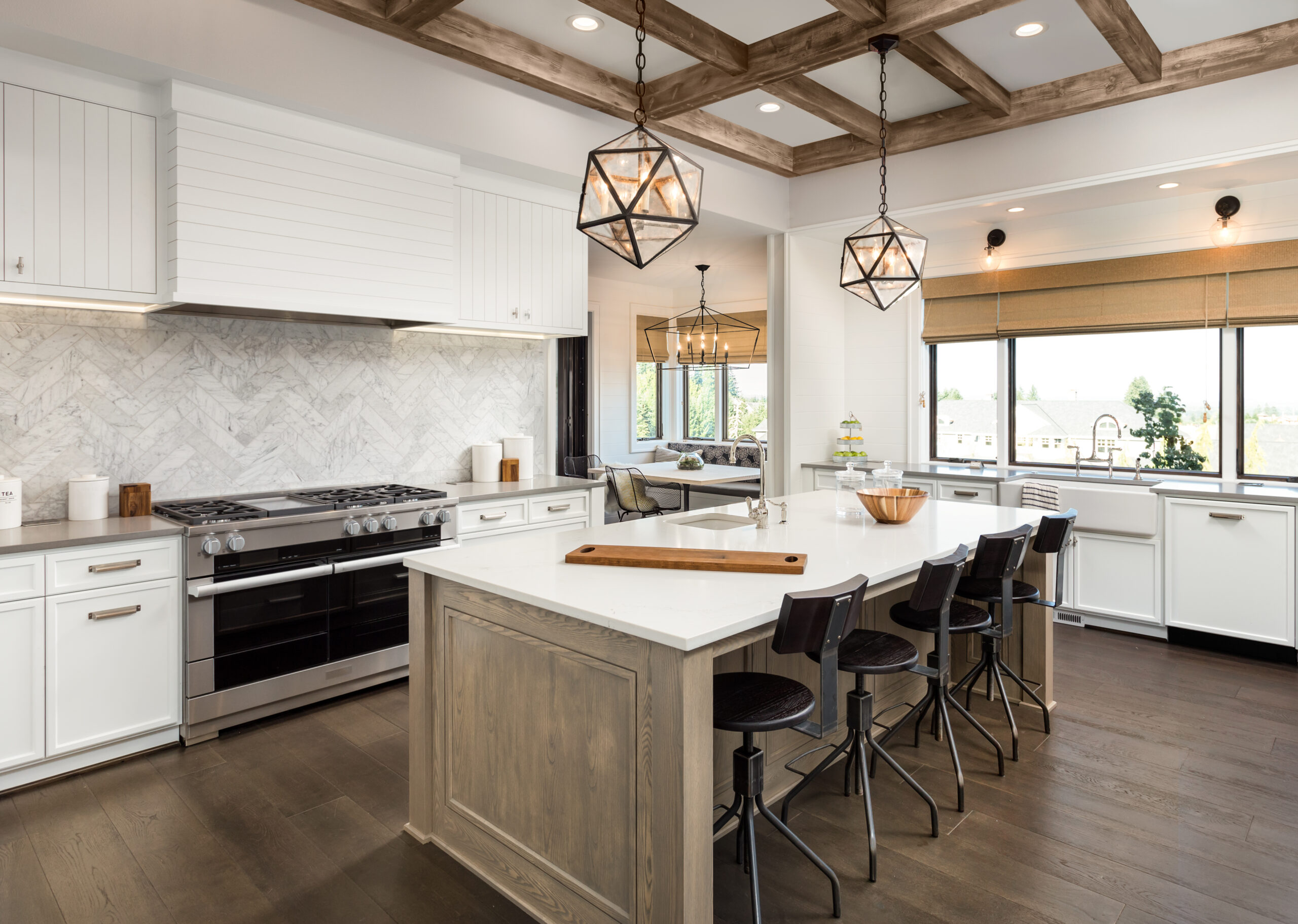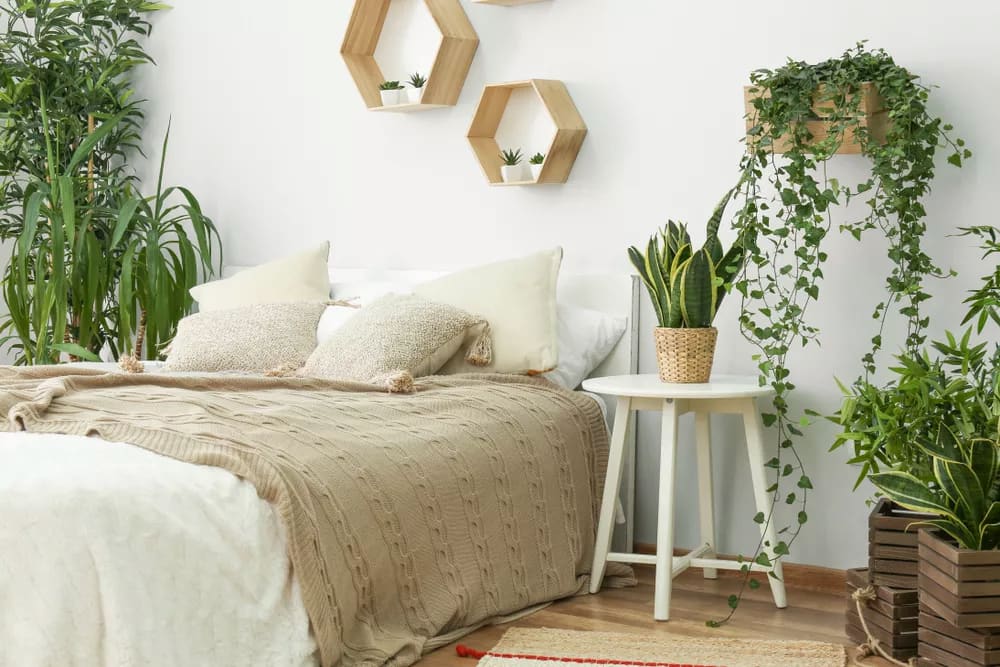What is Japandi style? Rooted in minimalism, Japandi has become a popular hybrid interior design style, combining Scandinavian influences with Japanese design principles. Check out our guide below to learn more about Japandi style and how to incorporate it into your own home’s design!
Getting Started with Japandi
Despite being named for blending Japanese and Scandinavian interior design styles, Japandi is a style all its own. In essence, Japandi is a fusion characterized by spaces that are bright, simplistic, and uncluttered with natural themes and rustic materials, as well as a light yet contrasting color palette and clean lines. The style also tends to place equal emphasis on form and function—traits shared by its biggest influences.
Borrow Minimalist Design Principles
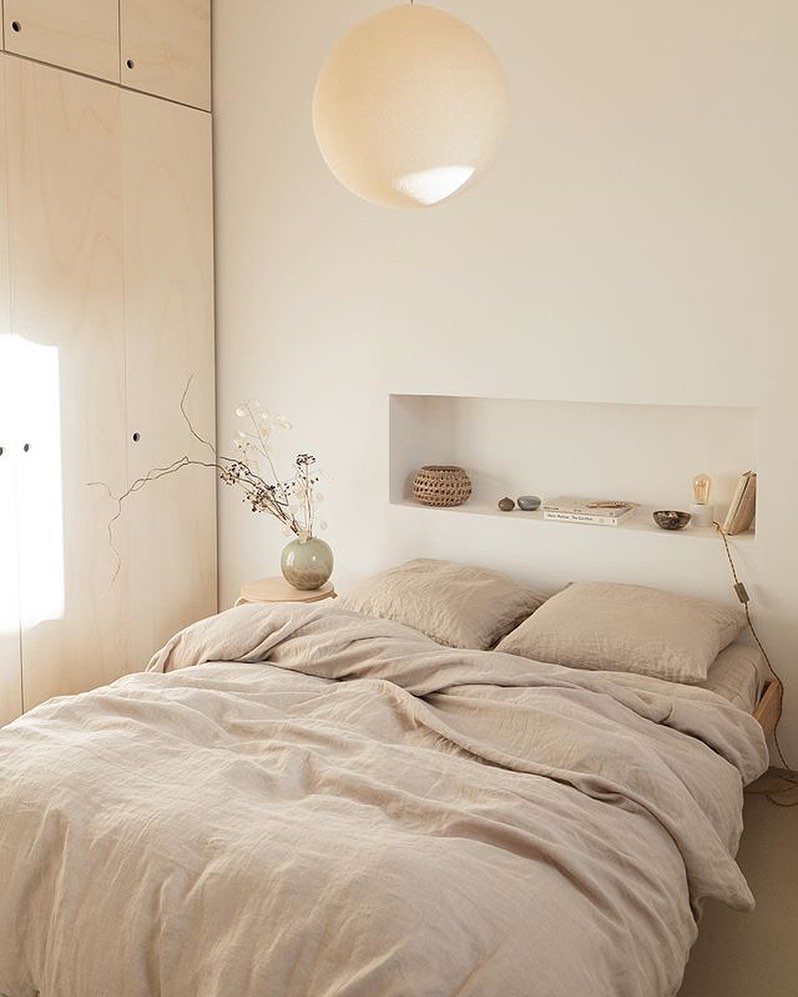
Photo via @kamelya_blusm
Japandi and minimalism are not one and the same, but these two design styles do share a number of traits. Like minimalism, which is popular in Scandinavian countries and Japan alike, Japandi focuses on clean lines, simple color palettes, and sustainability. Japandi style homes should be decluttered, use eco-friendly materials, emphasize practicality, and have a (mostly) neutral color palette. When decorating a Japandi home, prioritize sentimental quality over quantity.
Draw from Japanese Home Decorating
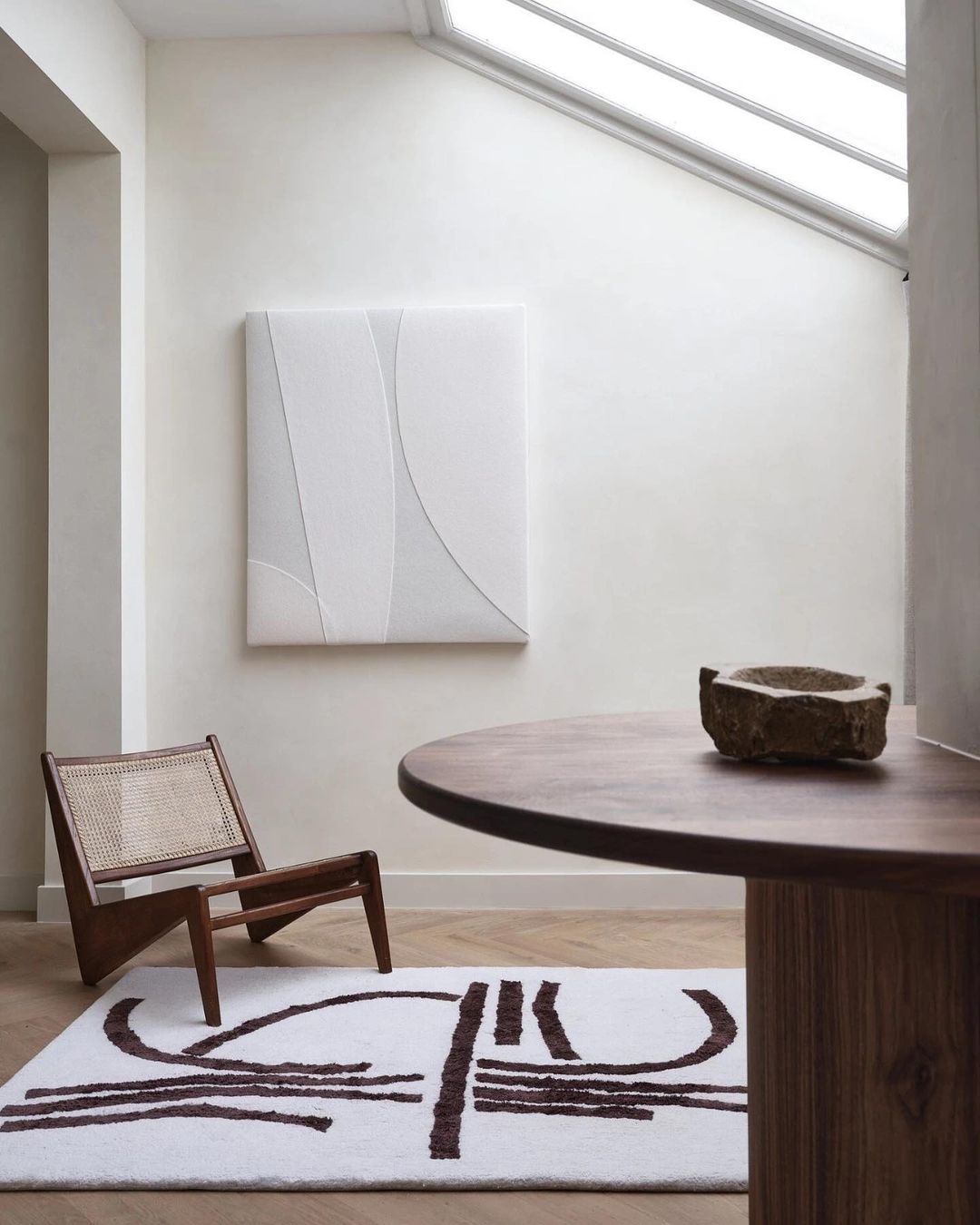
Photo via @do.pe.design
The use of dark-stained wood and bamboo furniture, open spaces, and natural lighting are all mainstays of Japanese interior design that also frequently appear in Japandi style. Sliding doors, low furniture, and nature-inspired pieces along with light earth tones, blacks, and deep reds are also common themes shared by Japanese decor and Japandi design.
Pay Homage to Scandinavian Interior Design
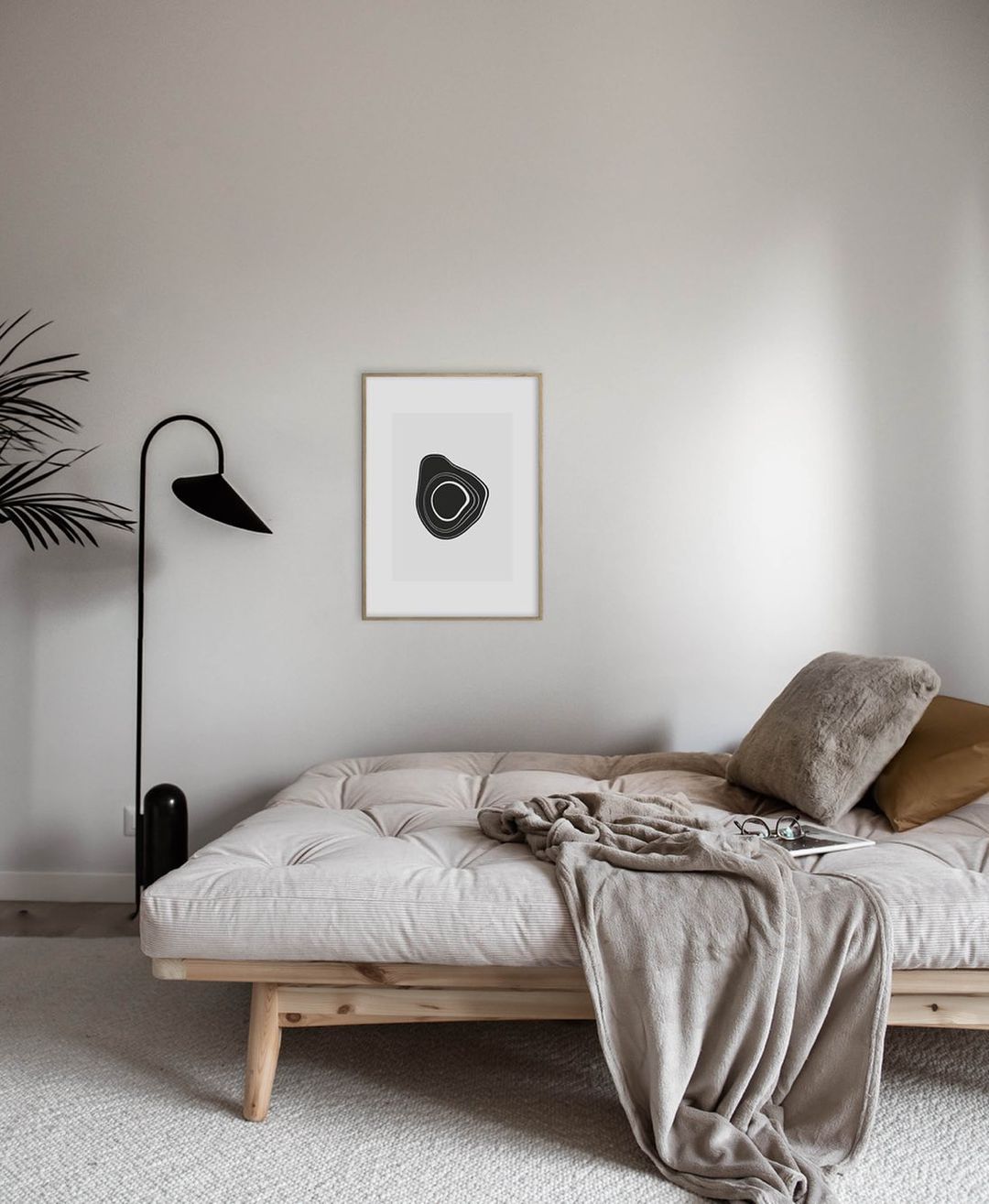
Photo via @visualpleasuremag
Hygge—a popular Danish and Norwegian design concept centered around rustic minimalism and coziness—isn’t the only Scandinavian design trend that Japandi interior decorating draws from. On top of hygge’s use of textured furnishings, rustic touches, and natural wood, Scandinavian homes also avoid clutter, accessorize with house plants, and use selective pieces of statement furniture like Mid-Century Modern classics. Patterns and bright colors are kept to a minimum, but should draw inspiration from nature when present.
Decorating with Japandi Style
Now that we’ve covered the basics, there are a few more tips and tricks you’ll need to know before giving your home a Japandi makeover. More specifically, here are the color palettes, decor choices, and aesthetics to seek out when redecorating your space to fit this popular design trend.
Use Color Contrast
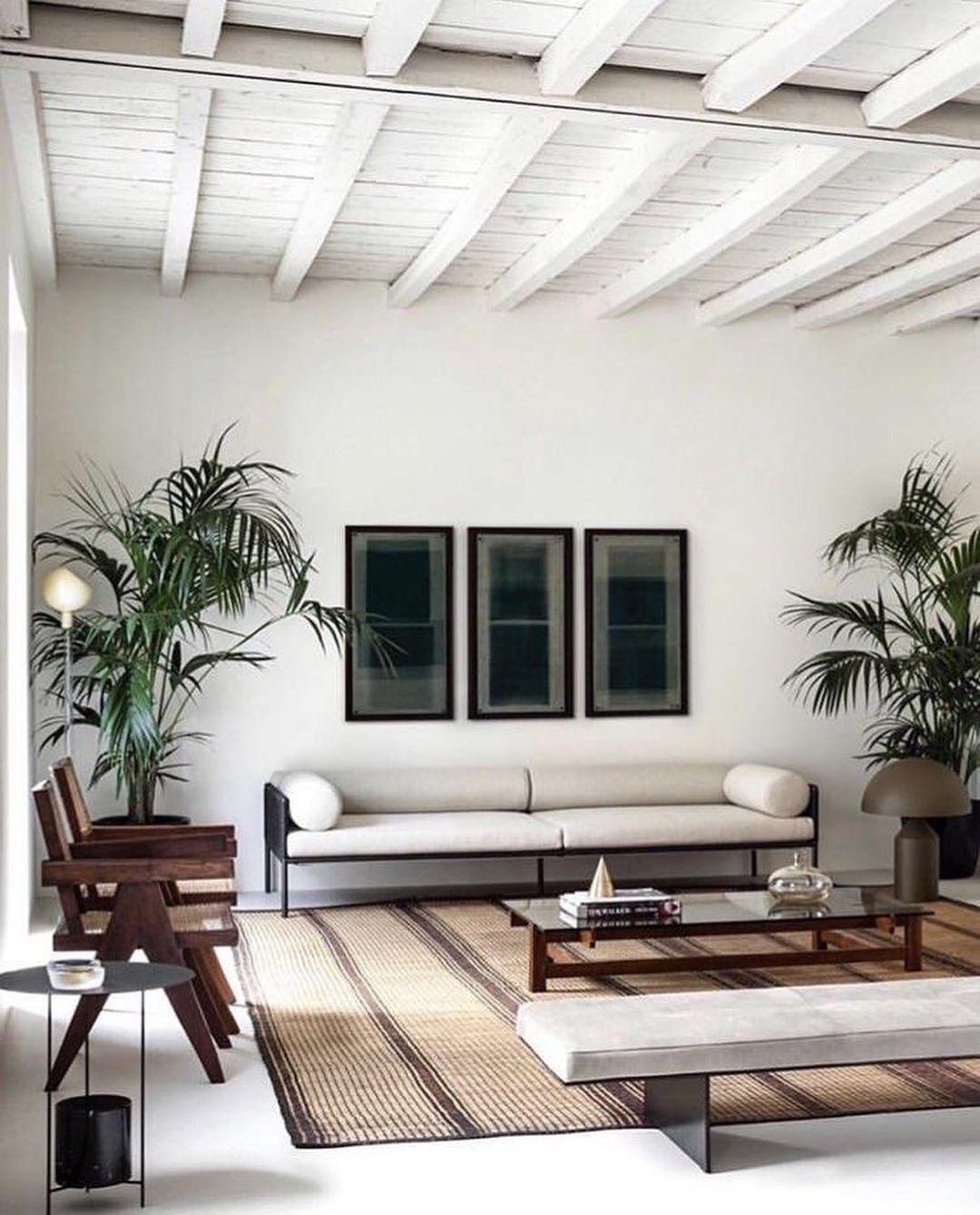
Photo via @srelle_studio
Bright whites, earth tones, and modern grays are great base colors for a Japandi house. That said, Japandi style does allow for slightly more contrast than most minimalist decorating styles—especially when it comes to accessories, wall art, and soft furnishings like rugs, throw pillows, and blankets. You can play up a space’s contrast by mixing light woods with splashes of black, red, and other dark colors for a striking visual effect.
Avoid Clutter
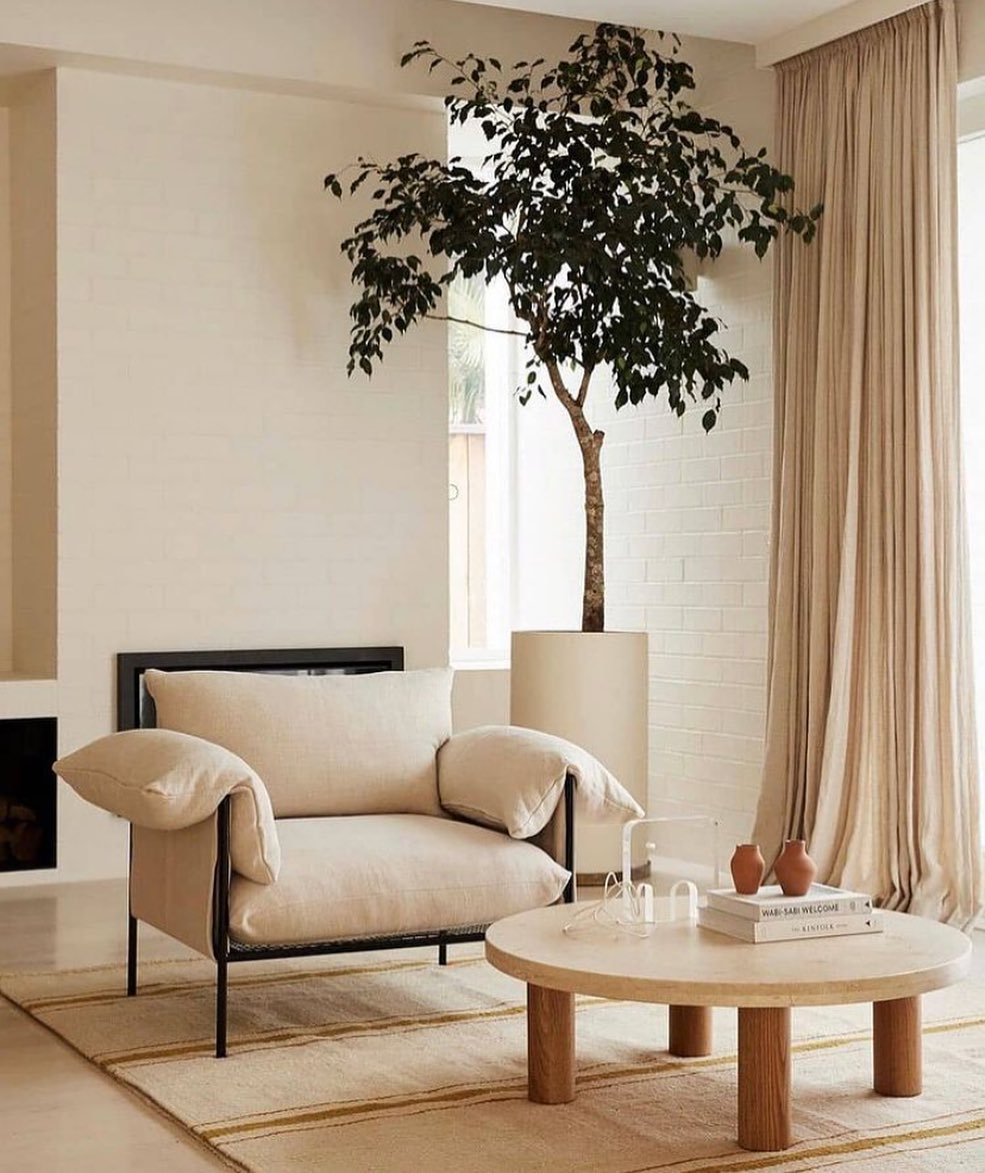
Photo via @japandi_interior
Random knick-knacks and messy surfaces have no place in Japandi home style. A good first step when redecorating is to declutter your space and limit items that aren’t functional, sentimental, or important to the overall design aesthetic. An easy rule to follow for keeping a clutter-free home is the “One Touch Rule.” In other words, open your mail as soon as you get it, rather than letting it pile up on a table or countertop; fold clothes as soon as they’re out of the dryer; wash dishes as soon as you’re done with your meals, and so on.
Embrace Clean Lines
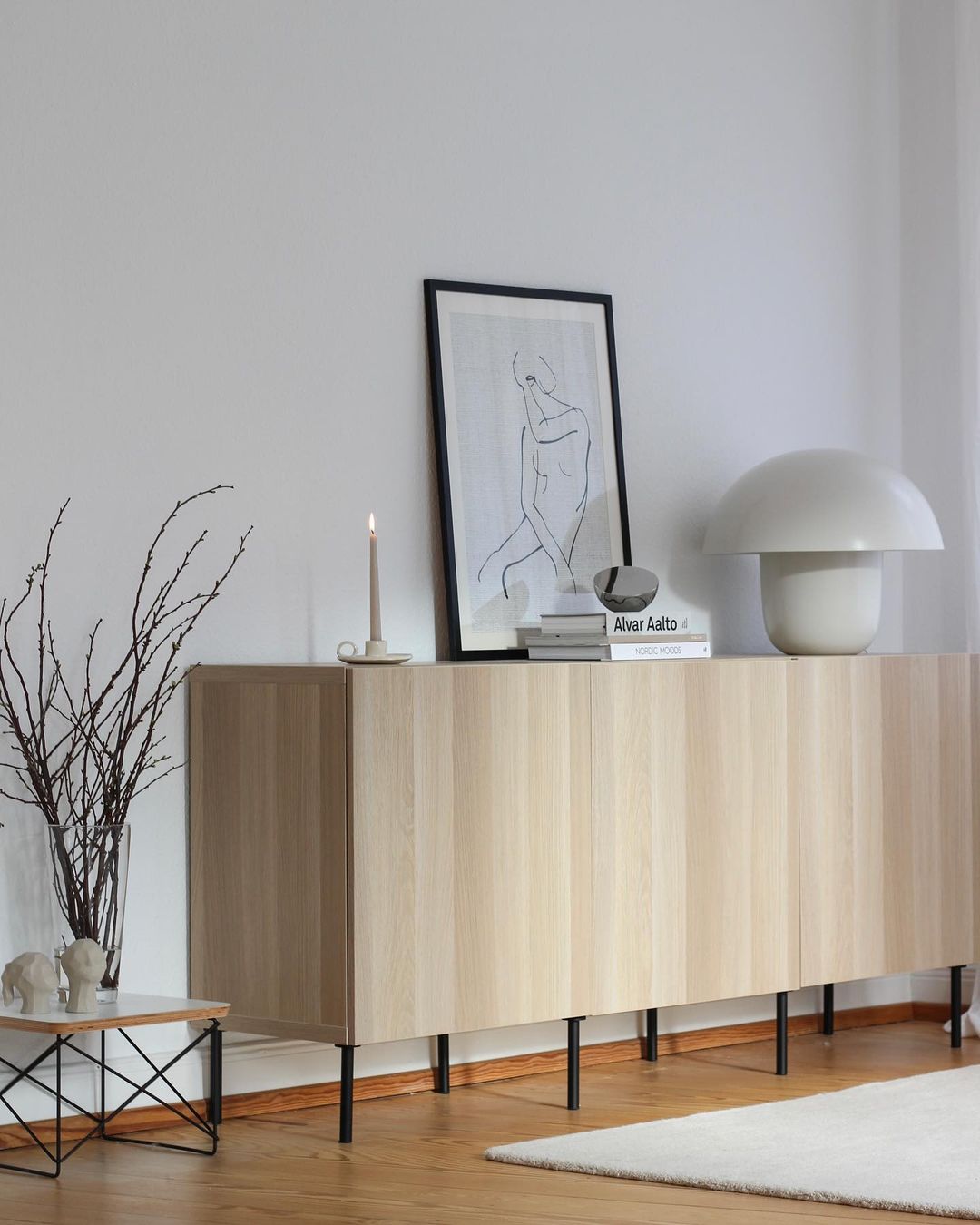
Photo via @neutral_at_home
Flow and form are primary pillars of the Japandi trend. Incorporating simple patterns into your home decor, keeping surfaces free of clutter, and using non-ornate furniture can all help achieve this look. Limiting hardware on cabinets, having glass tabletops, and choosing geometric accent pieces are all also good ways to create clean lines when redecorating your home in Japandi style. (Keep in mind that you don’t need to be as rigid when decorating a Japandi home as you would be with a minimalist design style.)
Focus on Natural Materials
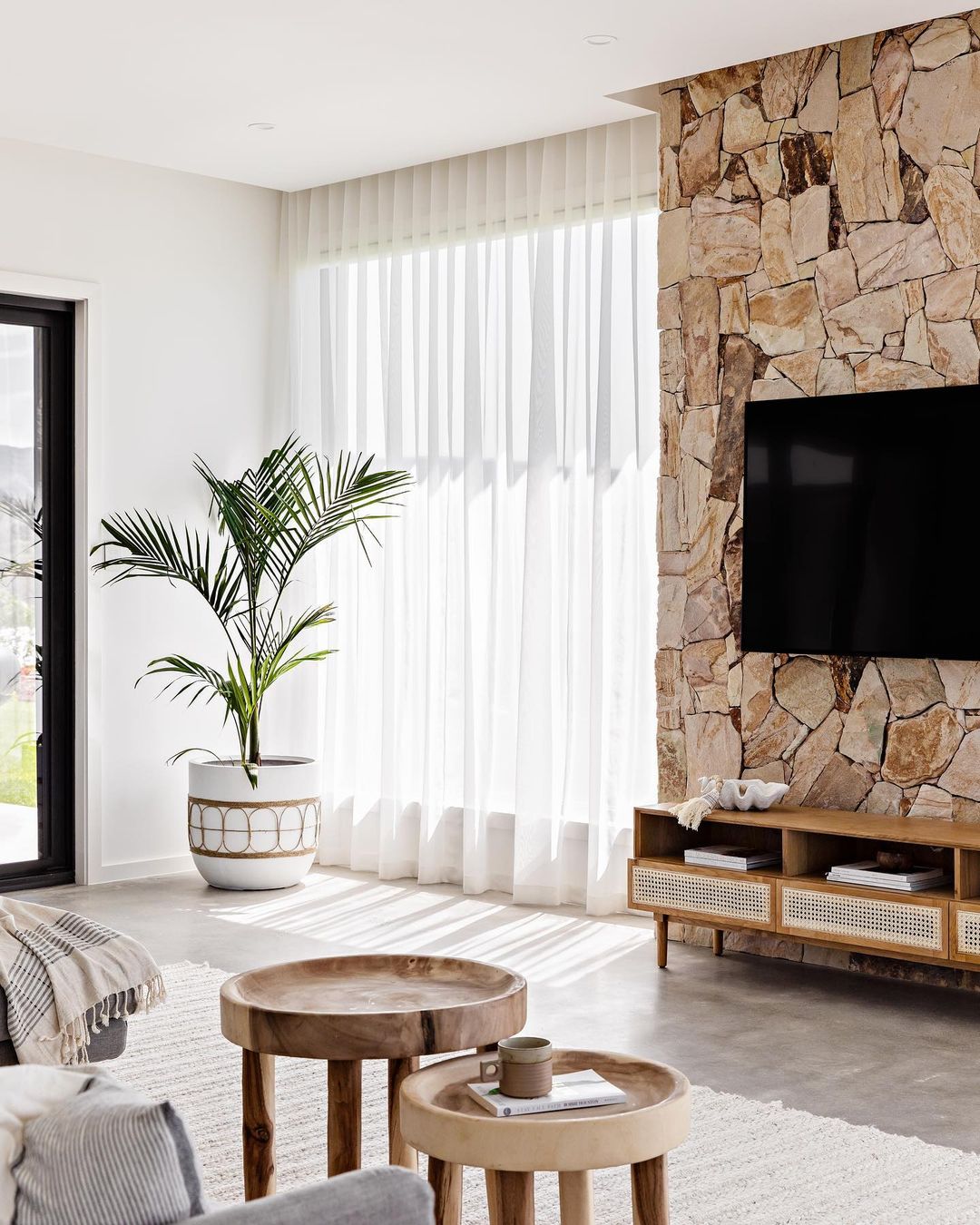
Photo via @the.palm.co
Wood, bamboo, hemp, and other natural materials are popular in Japandi interior design because of their sustainability. Of these materials, wood is perhaps the most common choice for Japandi decor. Japanese styles may lean more toward darker wood pieces, but Scandi tends to use more natural unstained wood. Darker stained wood works well to create contrast against a light Japandi base color palette, while naturally finished woods can be used almost anywhere in this decorating scheme. To fully embrace a Japandi style, go green with everything from your flooring to the furniture throughout your space.
Mix & Match Furniture
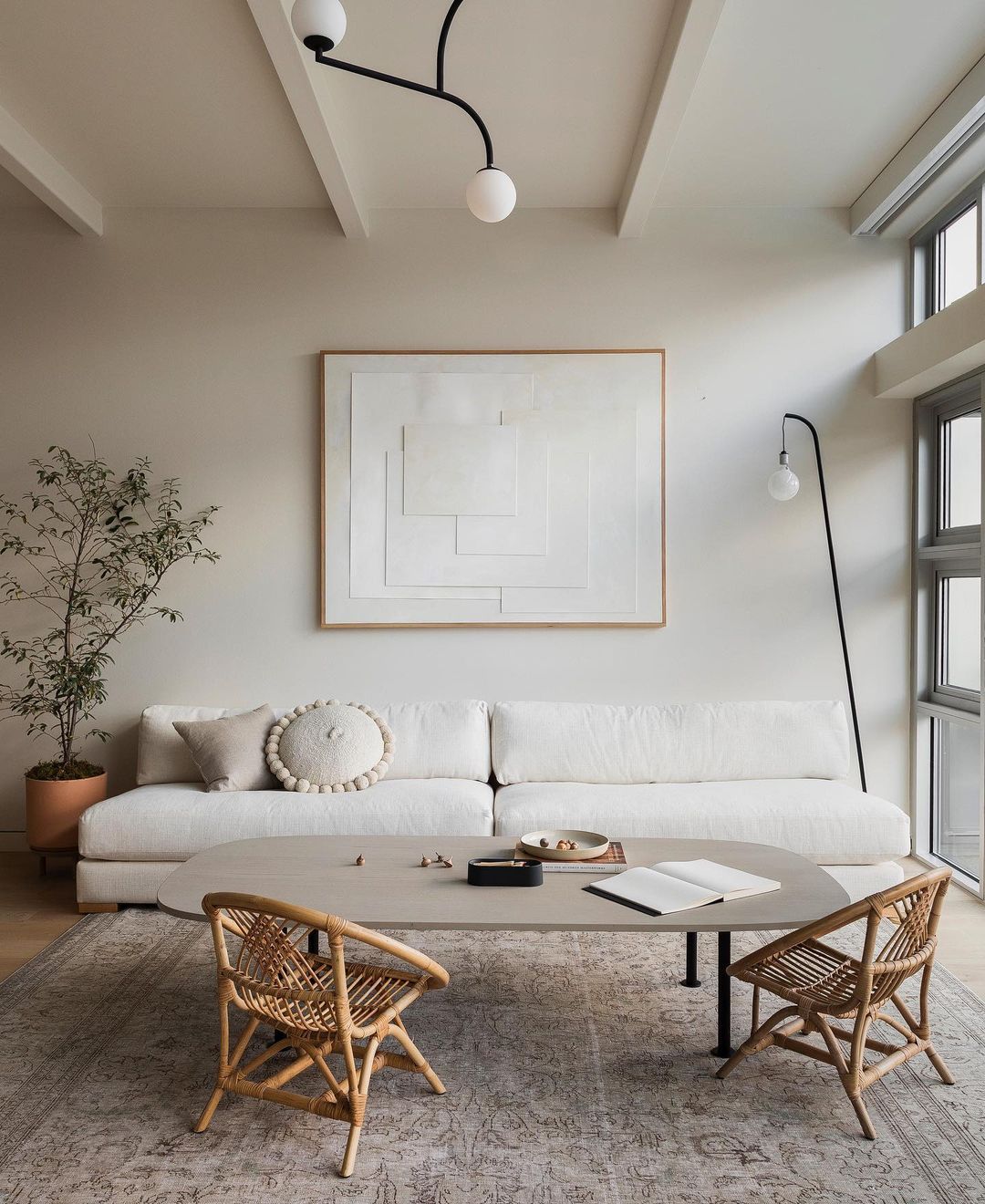
Photo via @haris.kenjar
Pieces like Japanese low tables (called chabudai), woven Scandinavian chairs, tatami chairs, straight-backed couches, and Mid-Century Modern furniture can be mixed to achieve the cohesive, hybrid look the Japandi trend is known for. The beauty of Japandi furniture is in the feelings it creates—comfort, function, and elegance are valued over complex, ornate aesthetics in this design. Make sure not to overfill and clutter rooms with furniture. Achieving this popular design trend and a natural Japandi look is often about what you leave out, not just what you put in.
Add Potted Plants
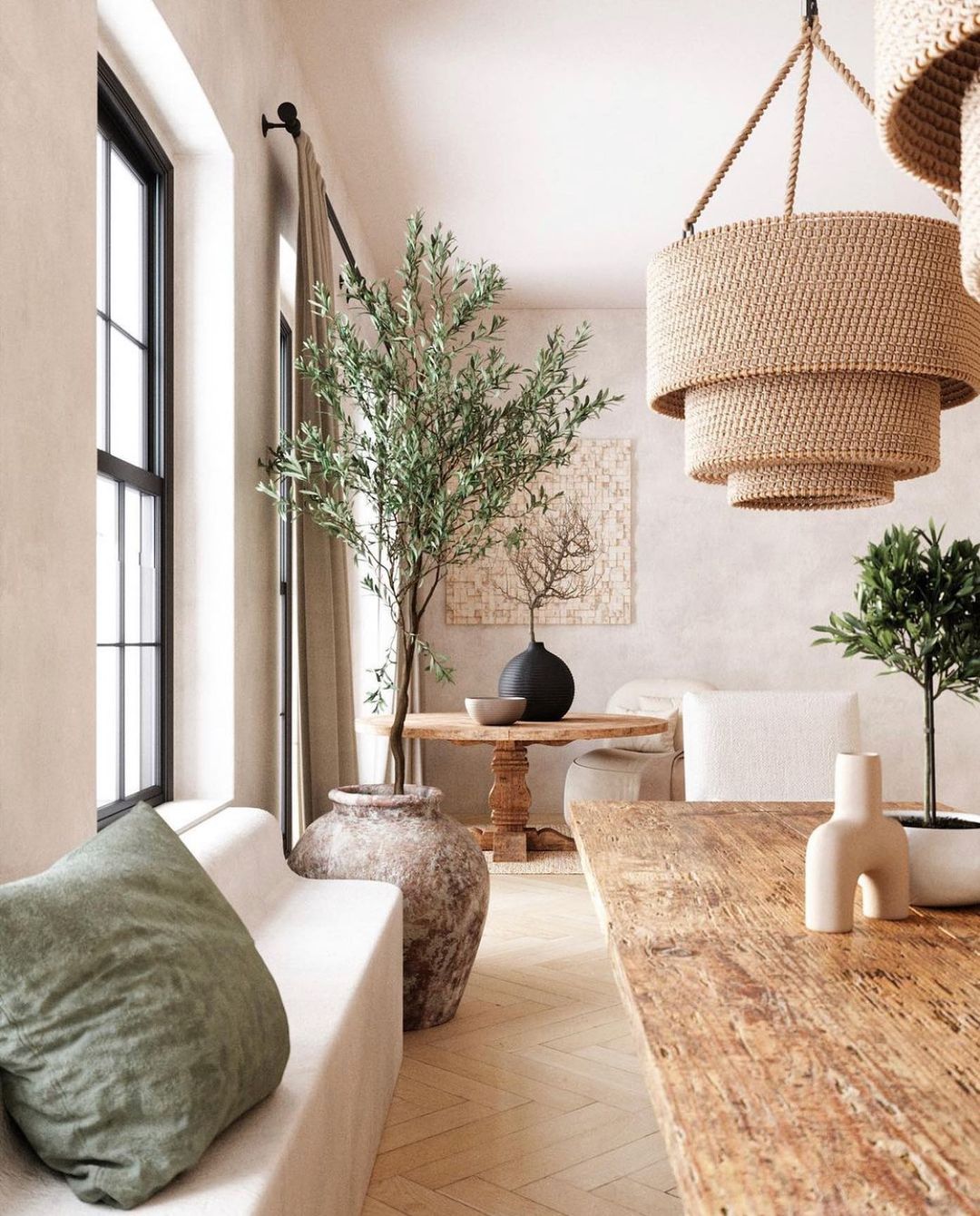
Photo via @my_atmosphera
Bringing the outdoors inside to create a sense of nature in your living space is the cornerstone of both Japanese and Scandinavian home design, so be sure to add potted plants as part of your Japandi home decorating. Having plants in your home doesn’t just serve as a timeless design choice; it also improves your home’s air quality, among other benefits. Monsteras, yuccas, palms, succulents, and bonsais are all great choices for a Japandi style home, thanks to the contrast they create in a space.
Include Statement Pieces
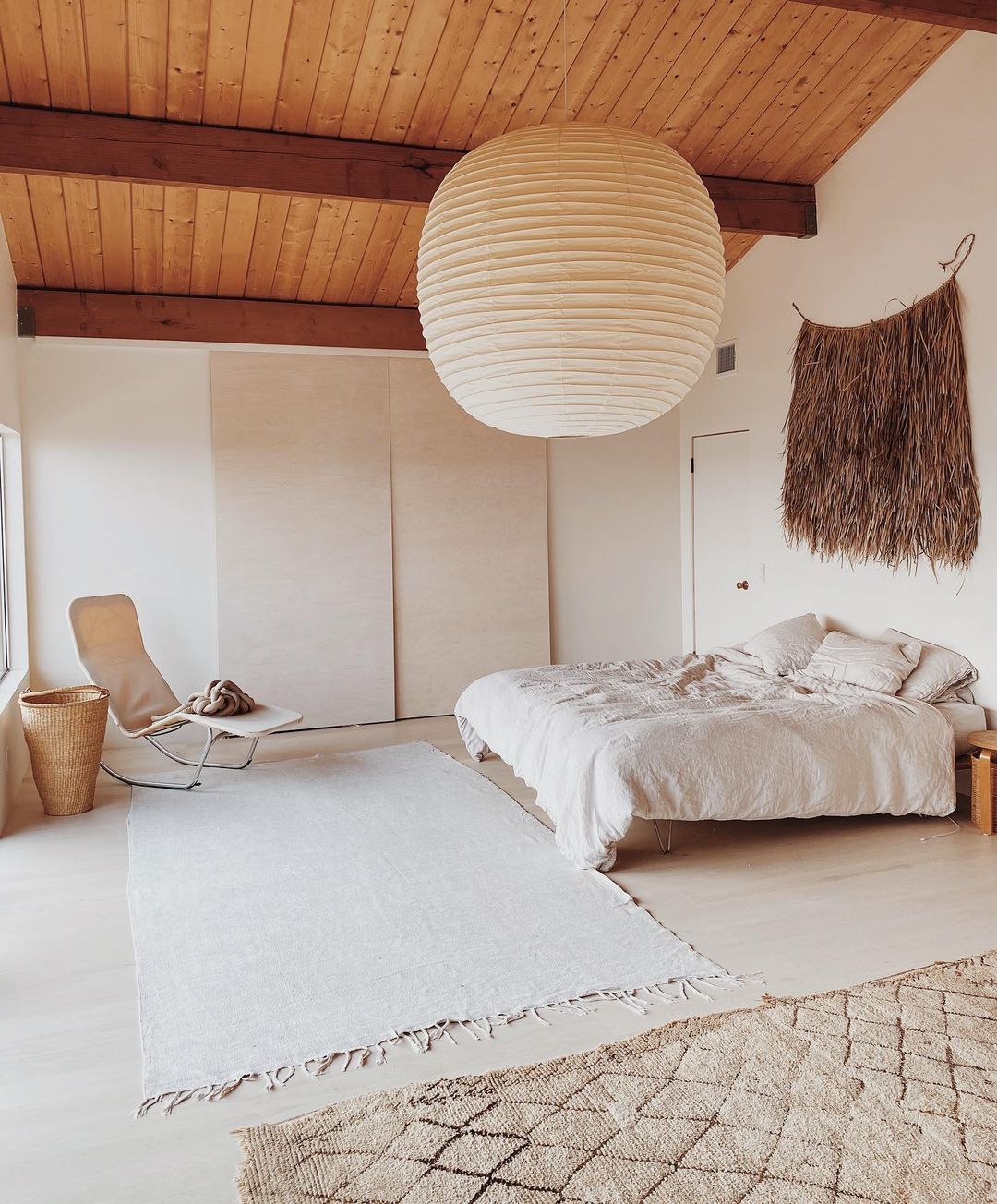
Photo via @maraserene
Even though Japandi style utilizes pared-down aesthetics, the trend also has roots in minimalism, which calls for the addition of a few bold accessories to keep spaces from feeling too cold and sterile. Whether it’s a standout light fixture, an especially large plant, a colorful vase, or an eye-catching centerpiece, having a couple of carefully selected statement pieces can help add life and understated personality to your home. Just make sure that these elements fit with the style and don’t overwhelm the space. Other Japandi themes—like natural materials and clean lines—should appear with these statement pieces, too.
Don’t Forget Soft Furnishings
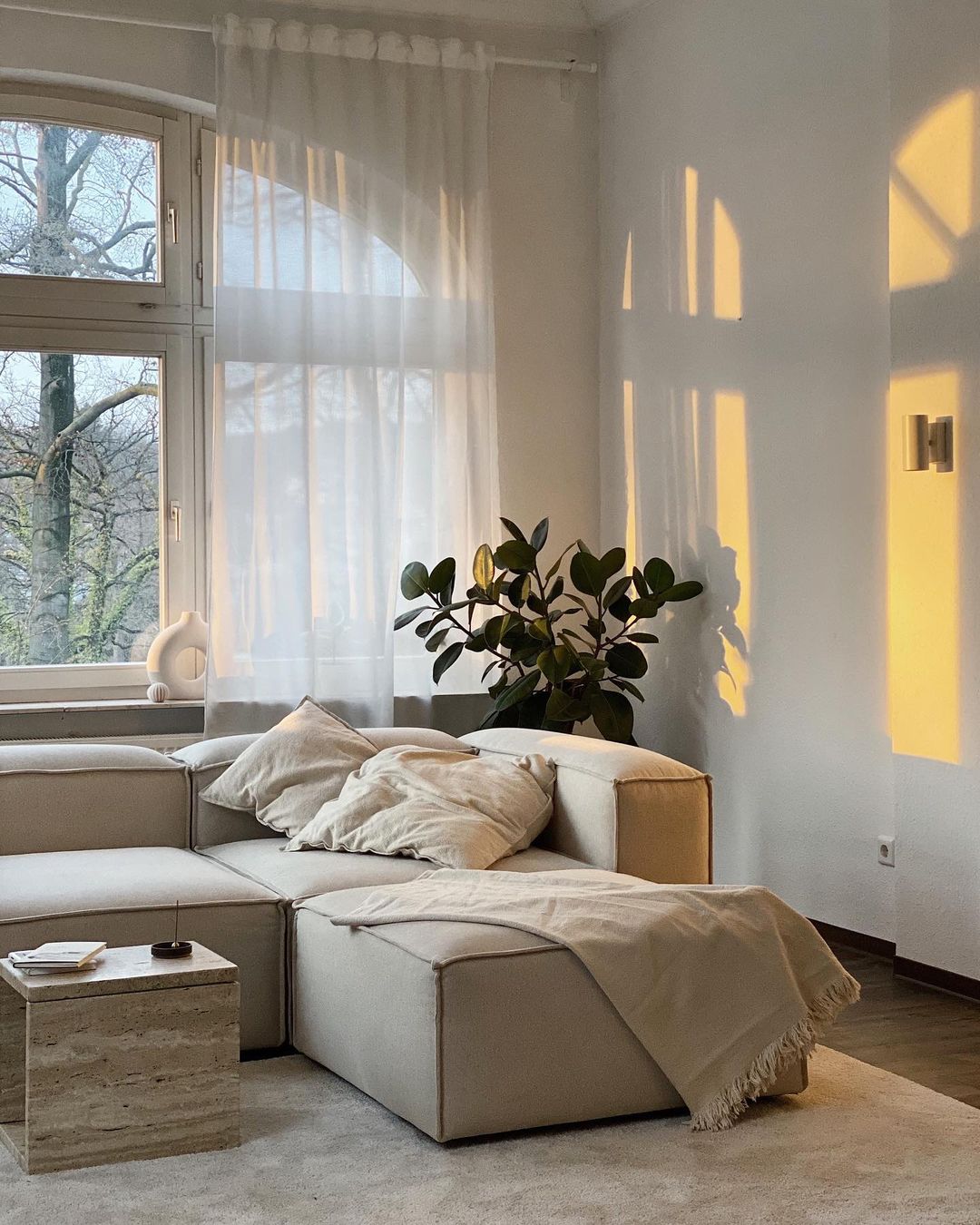
Photo via @alinabuschke
It’s easy to focus so much on the minimalist side of this design trend that you remove warmth from your home. To avoid this issue, try to incorporate some soft furnishings here and there. You can warm up a Japandi living room full of wooden furniture with a shaggy rug or add a sense of hygge to your bedroom with some thick-knit throws or faux furs. Window coverings like light curtains can also be used, but should be minimal and without too many frills. Also, don’t shy away from piling on pillows and blankets in your Japandi style bedroom. Embracing the comfortable hygge side of this interior design trend is key for creating a cozy home!
Curate Your Wall Decor
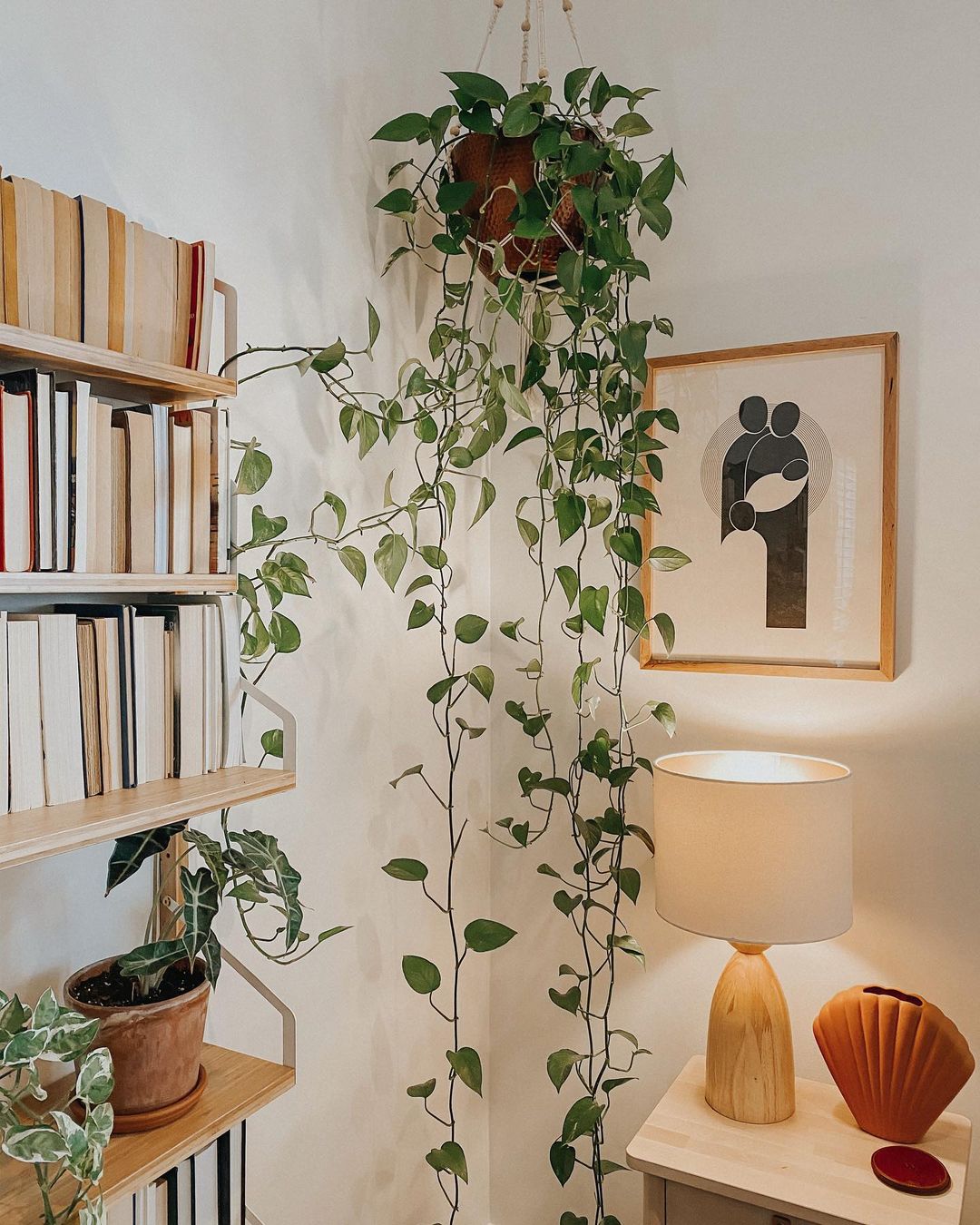
Photo via @coffeeandpoemss
While too many wall hangings would be a faux pas in Japandi home style, hanging up a couple of geometric or nature-themed art pieces, a colorful tapestry, a wooden mirror, or other minimalist wall hangings can make your house feel more like a home. Photos should be limited to ones with sentimental value that invoke joyful memories or creative inspiration. After all, Japandi style—unlike true minimalism—doesn’t discourage personal touches like these, so long as they’re done tastefully and in moderation.
***
Need somewhere to store extra belongings while you’re redecorating your home? Extra Space Storage has convenient and secure storage facilities throughout the U.S. Find affordable storage near you!
